The Palace Museum: A Cultural Journey Through History
The Palace Museum, a magnificent architectural complex standing at the heart of Beijing’s central axis, is like a profound history book, with each page filled with stories of bygone eras. It is not only the pinnacle of ancient Chinese palace architecture but also a shining pearl among world cultural heritages, attracting tourists from all over the globe to explore the traces of history.
I. Historical Background
Construction of the Palace Museum began in 1406 during the reign of Emperor Yongle of the Ming Dynasty and was completed 14 years later. As the imperial palace of the Ming and Qing dynasties, it was formerly known as the Forbidden City. Its construction adhered strictly to feudal etiquette, centered around the Three Main Halls, forming a vast and orderly palace community that manifested the supreme power of the imperial family. Over a span of 491 years, it witnessed the rule of 24 emperors. The ups and downs within the imperial court and the rise and fall of dynasties all unfolded among these red walls and yellow tiles.
II. Famous Attractions
(1) The Hall of Supreme Harmony
Commonly known as the “Golden Throne Hall,” it is the highest-ranked and largest building in the Palace Museum. The interior is resplendently decorated, with a golden throne placed high above, and the dragon and xici paintings on the hall ceiling are extremely exquisite, demonstrating the majesty and luxury of the royal family. During major festivals and ceremonies, the emperor would hold grand ceremonies here, receiving the homage of all officials.
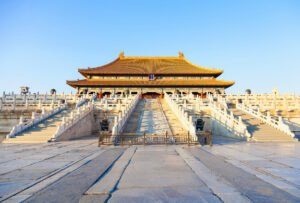
(2) The Hall of Central Harmony
This was the place where the emperor rested and received the homage of his officials before going to the Hall of Supreme Harmony for grand ceremonies. Its plane is square, with a four – cornered pyramidal roof. The architectural style is delicate and elegant, and the interior decoration is simple yet solemn.
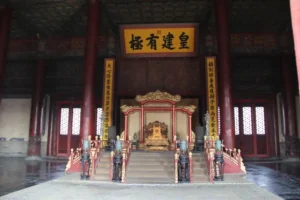
(3) The Hall of Preserving Harmony
Its functions differed in the Ming and Qing dynasties. In the Ming Dynasty, the emperor often changed clothes here before grand ceremonies. In the Qing Dynasty, it was the place for the imperial examinations and banquets for the royal family and nobles. The huge stone carving of dragons and clouds behind the hall is the largest in the Palace Museum, measuring 16.57 meters long and weighing over 200 tons, with exquisitely carved dragon and cloud patterns, showing superb craftsmanship.
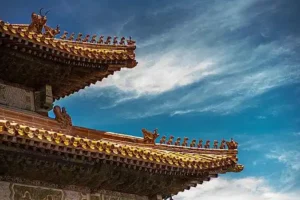
(4) The Palace of Heavenly Purity
This was the living quarters of the emperors of the Ming and Qing dynasties and the place where they handled daily government affairs. A plaque inscribed with “Uprightness and Brightness” hangs high in the hall. Behind this plaque, there was once a secret box containing the emperor’s decision on the crown prince, which was crucial for the succession of the dynasty.
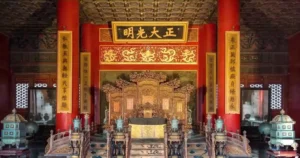
(5) The Hall of Union
Located between the Palace of Heavenly Purity and the Palace of Earthly Tranquility, its name is derived from the Book of Changes, symbolizing the harmony of heaven and earth and the balance of yin and yang. Inside the hall, 25 imperial seals that symbolize imperial power are preserved, which are important symbols of imperial power.
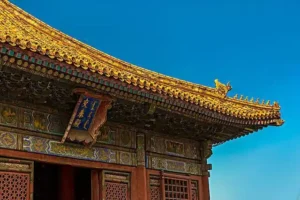
(6) The Palace of Earthly Tranquility
In the Ming Dynasty, it was the living quarters of the empress. In the Qing Dynasty, it was converted into a place for sacrifices and the emperor’s wedding. The bridal bed in the east warm chamber, the double – happiness characters, and other decorations still retain the festive atmosphere of the emperor’s wedding.
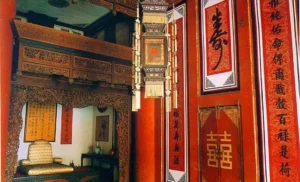
III. Tips for Visiting the Palace Museum
(1) Ticket – related
- It is essential to book tickets in advance on the official website of the Palace Museum or the official WeChat mini – program. The number of daily visitors to the Palace Museum is limited, and no tickets are sold on – site. Therefore, advance booking is the key to ensuring a smooth visit. When booking, fill in your personal information carefully, including your name, passport number, etc. Make sure the information is accurate; otherwise, it may affect your entry.
- Tickets are divided into two time slots: morning and afternoon. Choose the time slot that is convenient for you. Note that after successful booking, you need to enter the museum according to the selected time slot. Do not arrive too early or too late; otherwise, you may not be able to enter.
(2) Opening Hours
The Palace Museum is open throughout the year, but it is closed on Mondays (except for legal holidays). The opening hours are from 8:30 am to 5:00 pm, but ticket sales and entry stop at 4:30 pm. So, plan your arrival time well and try to come early to have more time to explore.
(3) Language Services
- The Palace Museum provides guided tours in multiple languages. You can rent an audio guide at the entrance, which is available in English, French, Japanese, and other languages. This can help you deeply understand the historical stories behind each attraction. The audio guide is easy to use. Just follow the instructions to put on the headphones, and the explanation will play automatically when you reach the corresponding attraction.
- You can also join a professional guided tour group. The tour guide can introduce the Palace Museum to you more vividly and in detail and answer all your questions. You can inquire about the relevant information of the tour group and sign up at the tourist service center.
(4) Visiting Routes
- The Palace Museum is very large. Entering from the Meridian Gate is the regular route. It is recommended to first visit the Hall of Supreme Harmony, the Hall of Central Harmony, and the Hall of Preserving Harmony along the central axis in sequence. These three main halls are the core buildings of the Palace Museum, with magnificent momentum, and you must appreciate them carefully. Then, continue walking backward to visit the Palace of Heavenly Purity, the Hall of Union, and the Palace of Earthly Tranquility and other palaces in the rear three – palace area.
- After visiting the central axis, if you have enough time, you can choose to visit the Clock Museum and the Treasure Museum in the east area, where a large number of exquisite cultural relics are collected. In the west area, there are the Hall of Mental Cultivation and the Six Western Palaces, which can let you experience the living scenes of the imperial concubines. If you are short of time, focus on visiting the central axis, and you can still feel the essence of the Palace Museum.
(5) Precautions
- Smoking is strictly prohibited in the Palace Museum. To protect this precious historical site and ensure the safety and comfort of other tourists, please abide by this rule.
- Do not touch the cultural relics and buildings. Many cultural relics have endured for hundreds or even thousands of years and are very fragile. Your touch may cause damage to them.
- Do not make loud noises during the visit. Keep a quiet environment, which can not only allow you to better feel the solemn atmosphere of the Palace Museum but also will not affect other tourists.
- Take good care of your personal belongings. There are many tourists in the Palace Museum, so be especially careful with your wallet, mobile phone, and other valuables in crowded places.
- There are some dining areas in the Palace Museum, where you can buy food and drinks, but the prices may be slightly higher than outside. If you want to save money, you can bring some light food and drinking water, but note that eating and drinking are not allowed in non – dining areas.
The Palace Museum, this historical hall, is waiting for you to uncover its mysterious veil and feel its charm across time and space. Whether you are tracing the footsteps of history or taking beautiful photos, the Palace Museum will never disappoint you. Come and start this cultural journey through history!


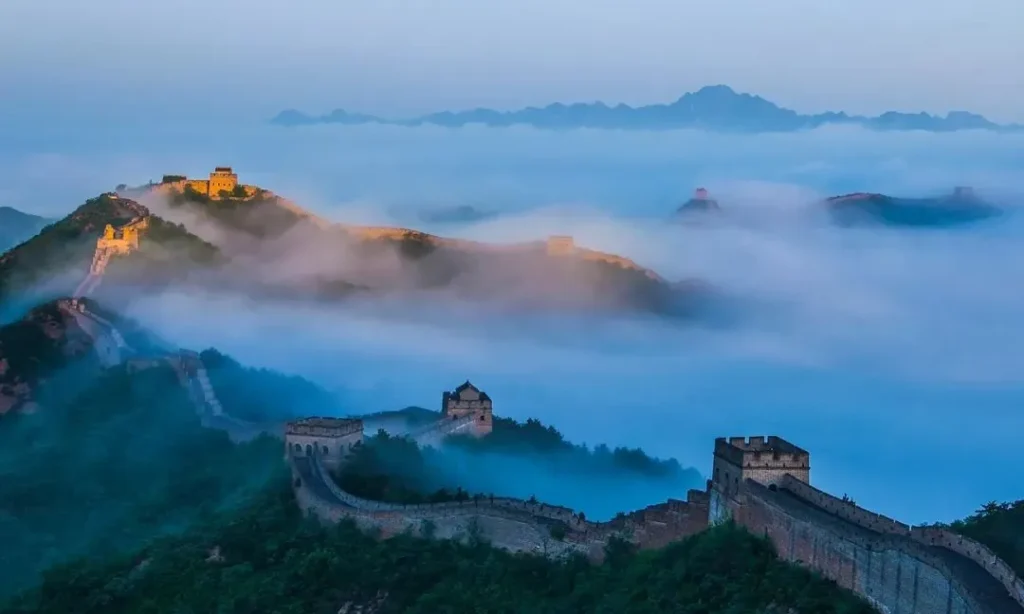

UJbblqTk GJvHhB MVECey nKXVNdbG xMSZTt iWbA
hello
kMABEo VtOoHmPP SRAP
hello
medyvtvikywehjvnllqxwgmvmkxzef
what would you want? or what can i help with you